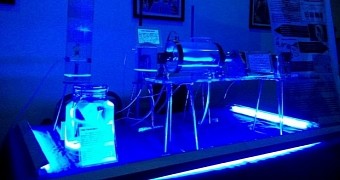A month ago, we told you that surgeons had managed to use 3D printing technology to make an artificial trachea for the first time. Now, we are following up on that news, even if the ones picking up the gauntlet aren't the same as those who first scored the breakthrough.
The Lung Center of the Philippines (LCP) have entered a written agreement with engineers from the Technological Institute of the Philippines (TIP) and representatives from the Genomic Institute of Asia (GINA), as well as Pharma Canada Ltd.
This agreement has to do with the creation and use of 3D printed tracheas instead of actual transplants. Apparently, 3D bioprinting technology is already that advanced.
It seems that the success at the Feinstein Institute for Medical Research, when they used a cheap MakerBot Replicator 3D printer to create one of those things, really impressed people.
The particulars of 3D printed windpipes
As the new coalition sees it, the best way to make them is to use a special printer to shape bio-ink into the scaffolding first.
Then the scaffolding has to be implanted along with a patient's own stem cells in order to allow the trachea to eventually become a biologically compatible human body part ready for transplant.
There could still be some risk of rejection, but very small because the windpipe will ultimately be made from the patient's own cells. As far as cutting-edge technology goes, this is one of the best examples yet.
What will come in the future
Obviously, the new alliance, however loosely the term is used here, will try to expand their activities to other 3D printed organs.
Other than livers, however, most will be hard to properly make. The windpipe is pretty simple in the grand scheme of things, with its tubular shape and more or less simple structure.
The nature of additive manufacturing lends itself particularly well to the task of producing the scaffold for such a thing.
Lungs, however, will be really hard to pull off, as unless you place negative pressure on them from outside, they tend to shrivel up like beaten sponges. And let's not even start on kidneys and stomachs. Still, eventually they should all be within reason, though it might take decades.

 14 DAY TRIAL //
14 DAY TRIAL //